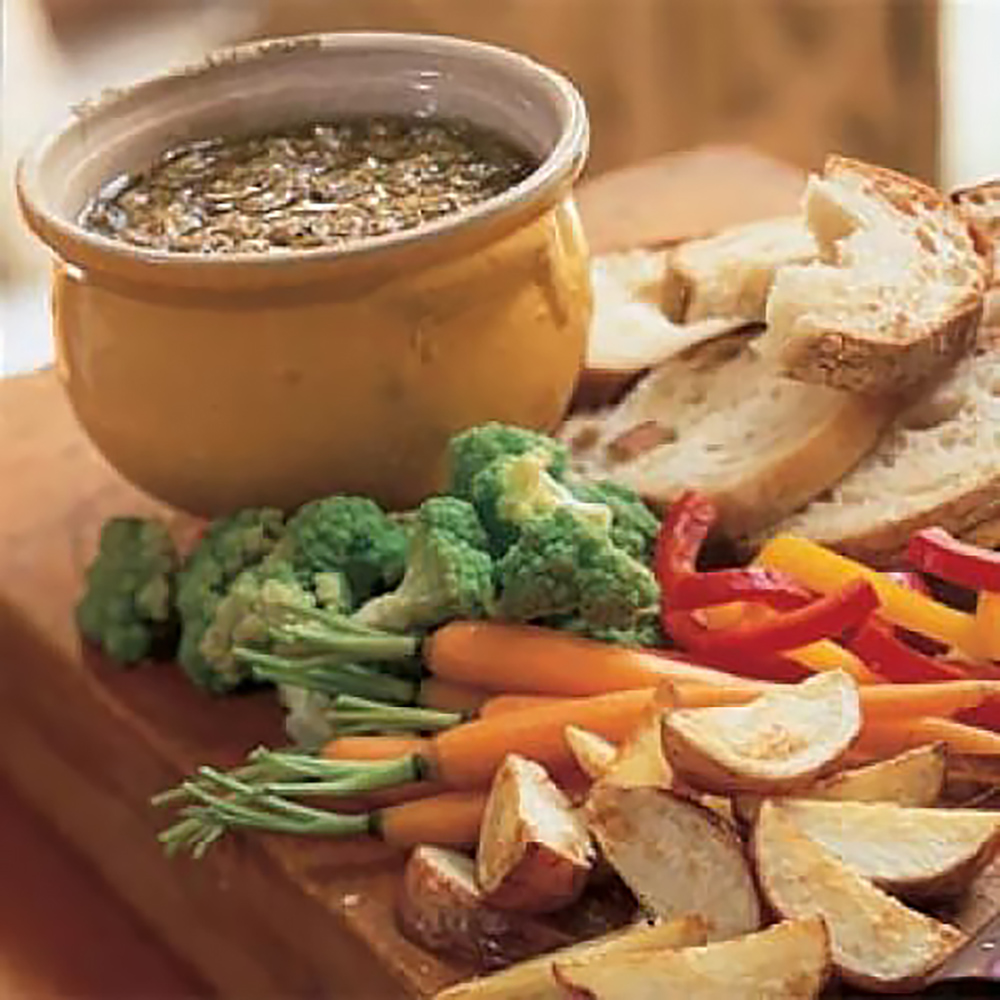By Chef Joseph Massaglia
It’s surprising to me that some people don’t like the flavor of garlic. I think it might be because they are using too much garlic when they’re cooking, or perhaps they aren’t prepping it properly.
Here in America garlic is overused in recipes. Its flavor is intense in every pizza, pasta sauce and even breadsticks (think Olive Garden breadsticks). Its strong flavor has become synonymous with Italian cooking, and in my humble opinion that is not fair.
When used properly, garlic should enhance the flavor of the dish (much like anchovies do in a sauce to add umami flavor without one ever tasting the anchovies), not make the dish taste like garlic. Unless, of course, you want it to be the star of the dish as it is in pesto, Piedmontese bagna cauda or Aioli, a creamy sauce made with garlic and olive oil similar to mayonnaise.
How you prepare garlic for a recipe does affect how strong its flavor becomes. Chopping or slicing garlic is better for delivering a more mellow flavor, whereas pressing garlic in a garlic press gives a more aggressive and intense flavor. And the longer you let chopped garlic sit, the stronger its flavor becomes.
Sometimes raw garlic can be too intense in a recipe, so you can blanch it if you want to use it in salads, pesto or hummus. An easy way to do this is to microwave your cloves of garlic in a bowl for two to three minutes, or until they’re warm to the touch but not cooked. The end result is garlic with a smoother taste that will go perfectly with cold dishes.
Historians have found that garlic was grown by the Egyptians as early as 2900 B.C., but none of the recipes found for those times used garlic. The pharaohs only fed it to their slaves and horses as a source of energy!
According to Burt Greene in his 1979 cookbook Kitchen Bouquets, “Upper class Egyptians shunned the flavoring entirely, as did the people of the Indus Valley (the Indian subcontinent).
Citizens of the Indus Valley were forbidden to plant the bulbs in their gardens. And the fine for having garlic on one’s breath was often the removal of the person’s nose!”
Even the ancient Italians thought garlic was only for peasants. It was seen as a cheap, abundant and easy to grow allium (member of the onion family). An ancient Roman poem describes a meal of leeks, onions, bitter greens, cabbage and “stinking garlic” that was eaten only by men who plowed the fields.
So, how did strong garlic flavor become pervasive in Italian cooking, especially today in Italian-American cooking? When Italian immigrants came to America to pursue the American Dream they were used to having garlic in their diet, and it was equally easy to grow here and always cheap. Plus, in those days, American cooking was very bland, therefore the smell of garlic emanating from Italian kitchens was a very strong smell to most Americans.
It wasn’t until after World War II when soldiers came back from having tasted the delicious flavors of the world, and in the 1950s when many chefs began promoting the Mediterranean diet, that Americans began to really appreciate garlic, so much so that it was greatly overused and cooked badly – some Italian chefs said American chefs always burned the garlic in their recipes.
But Italians use far less garlic than you think. Did you know that China has the largest per capita consumption of garlic in the world, eating 87% of all garlic produced. And that Romanians chew raw garlic to ward off a cold? And, of course, vampires!!
In addition to pesto, one my favorite recipes featuring garlic is Bagna Cauda from my home region of Piedmontese. I’ve included the recipe for Bagna Cauda from my website, www.joestablefortwo.com, with this article.
Bagna Cauda
(Piedmontese Garlic and Anchovy Sauce)
Chef Joe Massaglia
This sauce is one of the specialties of Piedmontese cooking, served whenever the Piedmontese feel hungry accompanied by coarse red wine. The name literally means “hot bath” because raw vegetables, in particular tender cardoons, celery, peppers, artichokes and chicory, are dipped into it. It is usual to serve bagna cauda in the pan in which it has been cooked, kept hot at the table over a small spirit stove.
- 1 cup butter
- 4 tablespoons olive oil
- 4 cloves garlic, finely chopped
- 6 anchovy fillets, chopped
- Salt to taste
- 1 small truffle, thinly sliced
Heat the butter and olive oil together in a shallow pan, earthenware if possible, and sauté the garlic gently without letting it brown. Take the pan off the heat and add the anchovies. Stir well with a wooden spoon. Return pan to a low heat and continue cooking, stirring, until the anchovies have dissolved into a paste. Season with a pinch of salt and add the truffle. Serve hot.
Joe’s Table for Two radio show airs Saturday mornings from 10 a.m. to 1 p.m. on WOND 1400 AM. Website: joestablefortwo.com. Facebook: Joe’s Table for 2. Contact Joe:
joestablefortwo@gmail.com.






